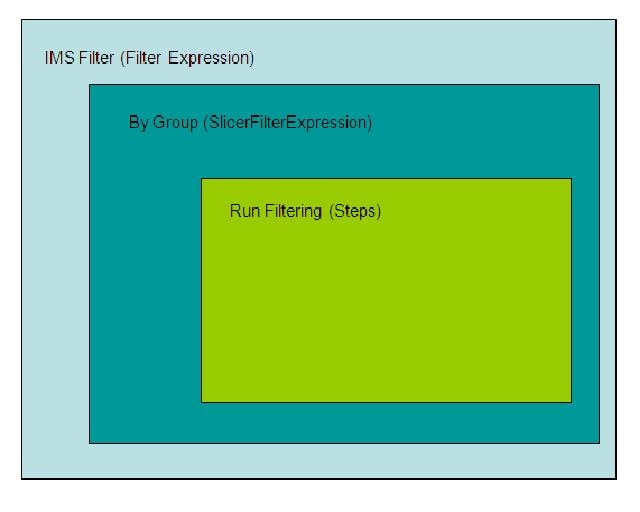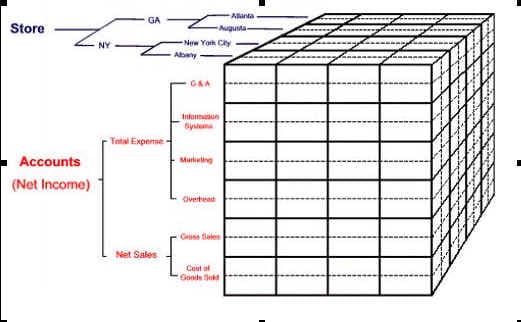The modeling of how filtering is done is one area that is not transparent between OLAP and relational data.
Relational Filtering
Relational filtering is done through the creation and use of expressions from the
com.sas.iquery.metadata.expr.relationalpackage inFilterItemandCompoundFilterobjects and specifying one or more of those filter objects on theDataSelection.setFilters()method. If more than one filter is specified onsetFilters(), then filters are treated as if they were logically joined withAND.
For an example of how to use relational filters, see Relational filtering use cases.Ranking enables the query to return either just the top (or bottom) N values of a given data item or the top values together representing at least N% of the total.
See Relational ranking use cases.
OLAP Filtering
OLAP Filtering can be illustrated in the following model.
OLAP filter that are applied (at run-time) as a step to a data item or business query are defined as a "child" filter (as displayed by the innermost box). They are applied using the step model.
OLAP "ByGroup" filter are applied as an special internal expression that is applied through the ByGroupCreator class.
OLAP filters that are applied (in IMS for the map) as expression to the business query are defined as a "parent filter (as displayed by the outermost box). They are applied as a filter for the DataSelection. A filter expression would require the definition of "WhatToFilter (dimension to filter)", a comparison operator, and a constant value and/or data item for comparison. See OLAP filter expression use case for an example.




